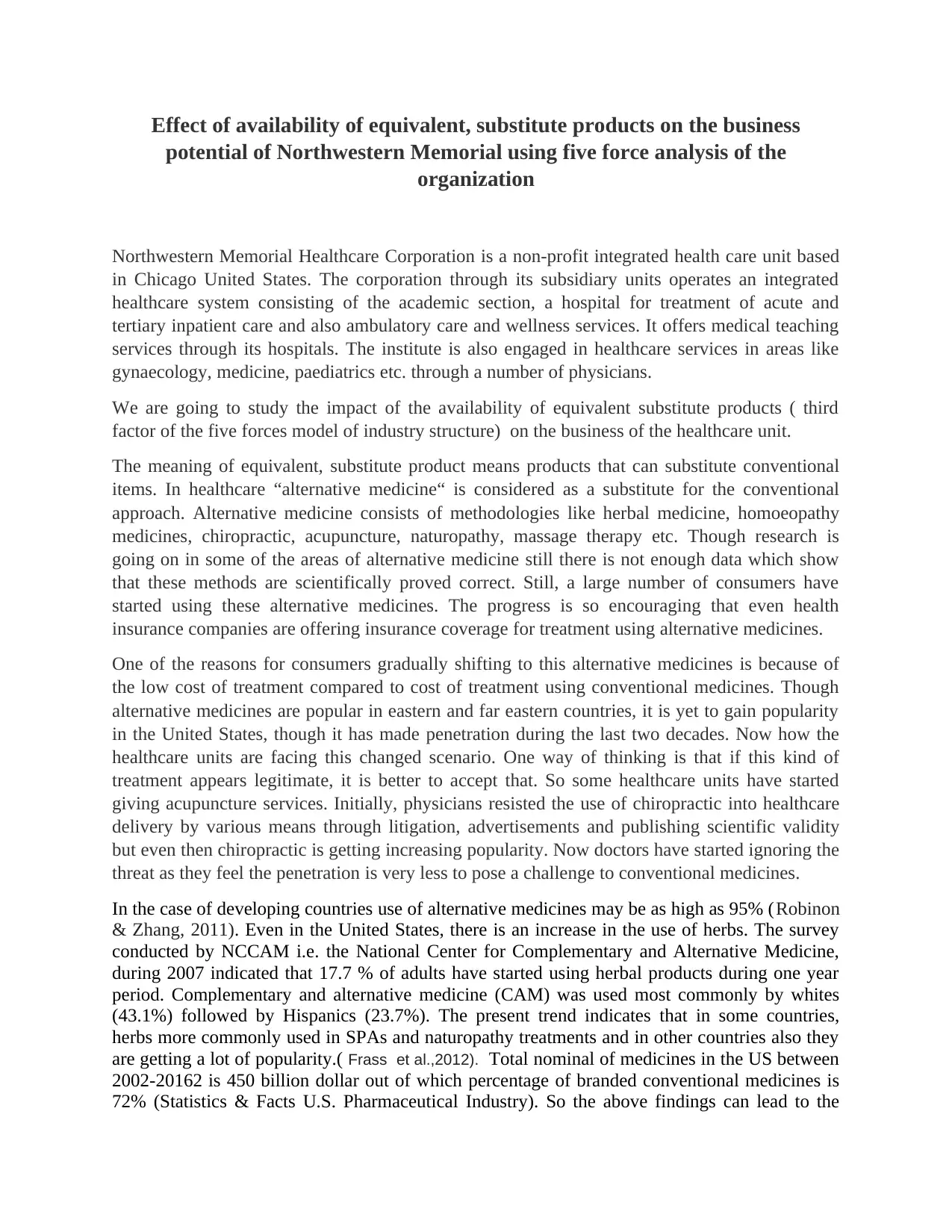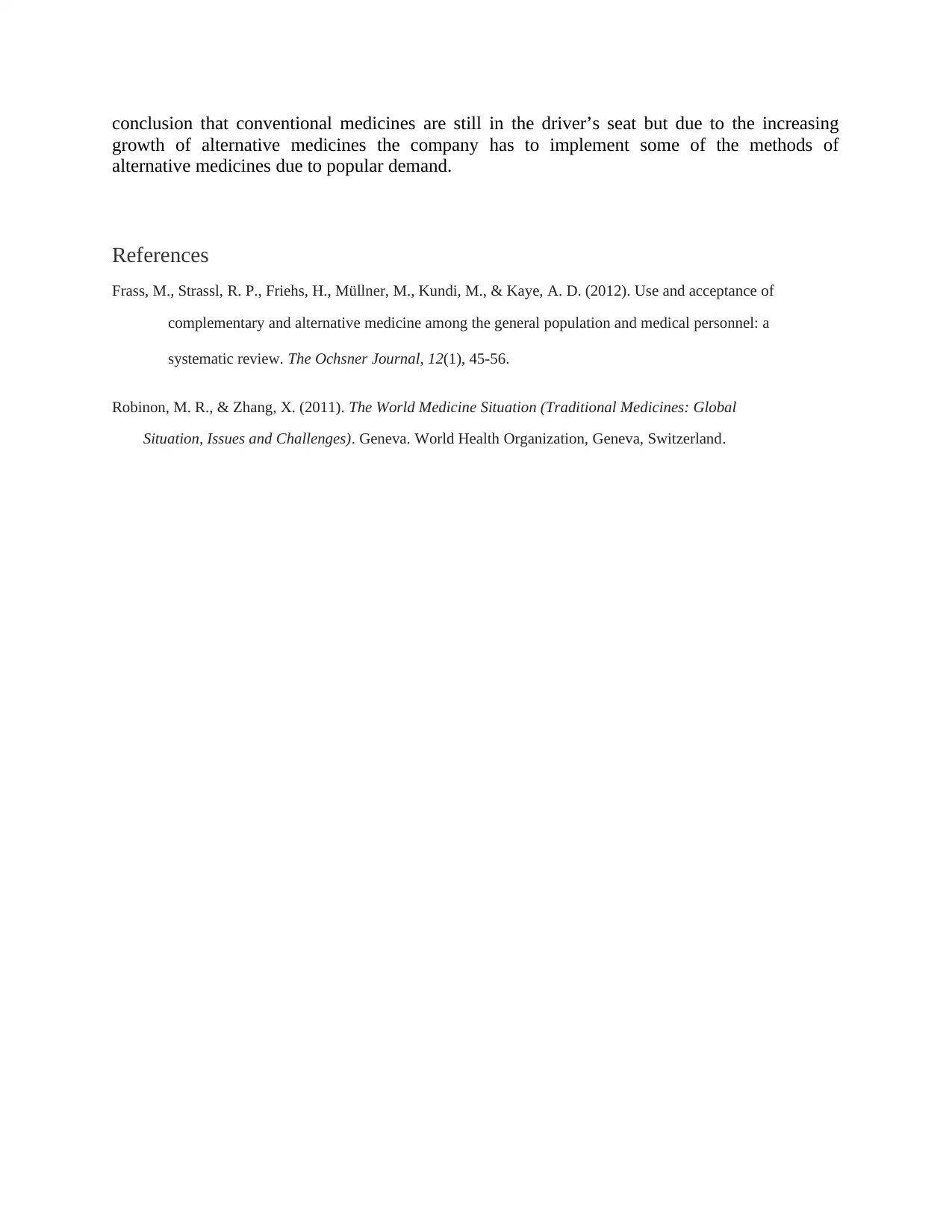Analyzing Substitute Products Impact on Northwestern Memorial
VerifiedAdded on 2023/04/25
|2
|734
|368
Report
AI Summary
This report examines the impact of substitute products, specifically alternative medicine, on the business potential of Northwestern Memorial Healthcare Corporation using Porter's Five Forces analysis. It discusses the rising popularity of alternative medicine, including herbal medicine, homeopathy, chiropractic, and acupuncture, and its potential to substitute conventional medical treatments. While conventional medicine still dominates the market, the increasing use of alternative therapies, driven by factors like lower costs and growing consumer acceptance, necessitates that healthcare providers like Northwestern Memorial consider incorporating or adapting to these trends. The report references studies and statistics on the usage of complementary and alternative medicine (CAM) to illustrate the changing healthcare landscape and its implications for traditional healthcare providers.
1 out of 2



![[object Object]](/_next/static/media/star-bottom.7253800d.svg)